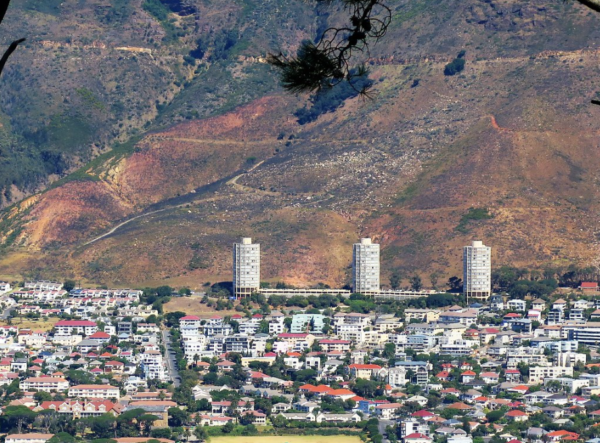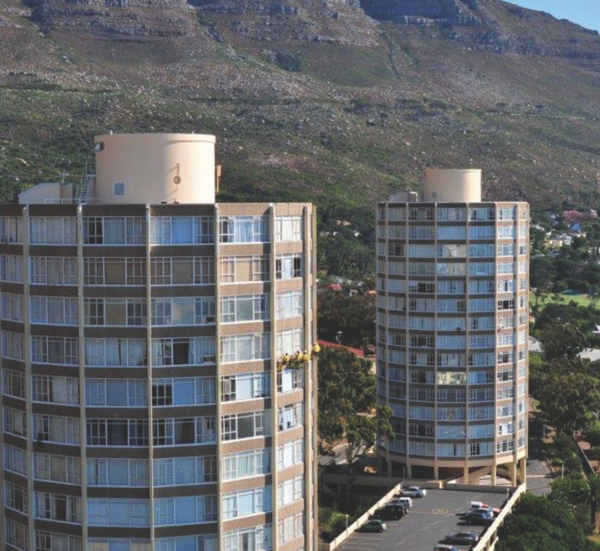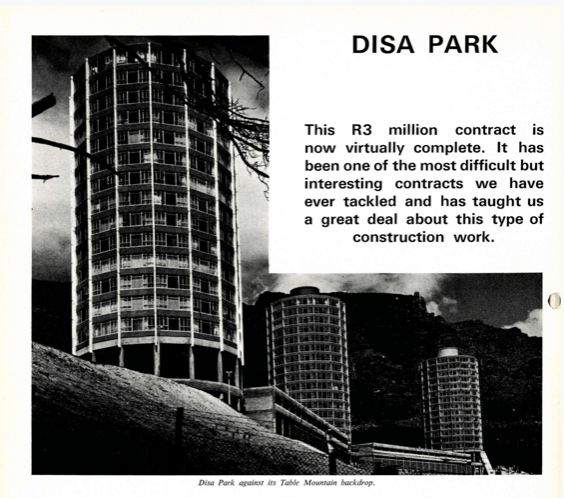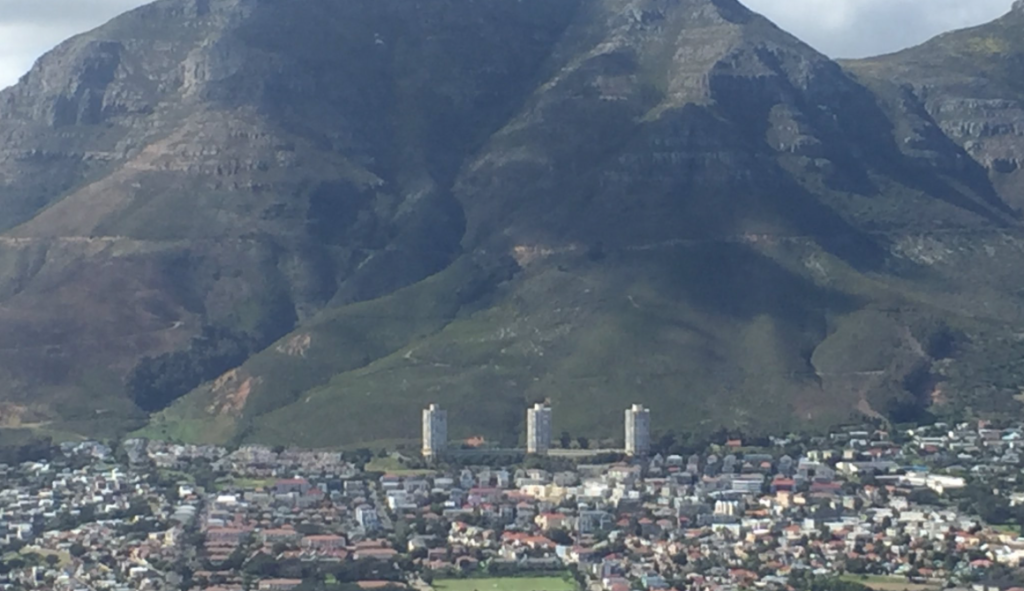Known by many names Vredehoek’s “Tampon Towers”, “The Pepper Pots” or “The Toilet Rolls” are a well-known addition to the Cape Town skyline that dates back to the 1960s, this is their story.
While the towers are infamous for their less than perfect appearance many are unaware that their actual name is the Disa Towers as they are located in Disa Park.
These 17 storey structures were built by construction company Murray and Roberts in the 1960s with each tower being given their own name: Blinkwater, Platteklip and Silverstroom.

As they feature in the foreground of the beautiful Table Mountain, residents have long seen them as spoiling the natural beauty of the mountainside.
The towering structures were approved for construction when the company found a loophole in the building restrictions placed on the mountainside. They managed to build the base below the allowable development line and then built upward from there, finding a clever way around regulations.
An interesting point of the development is that in their early years of letting prices for apartments ranged from between R55 to R160 per month and included water and electricity. Other features offered to tenants included a laundromat, doctors clinic, creche, shoe repair depot, sport facilities, a garden and parking. Roughly 340 cars can park in the parking area.
In total the buildings offer 287 apartments and could house roughly 1 000 people comfortably.
In their day, the structures were highly experimental and lead the way for their industry in design and lessons learned from construction. Their circular design is capable of reducing noise pollution and the structures feature unique vinyl-like flooring which further reduces unwanted sound.
Now the towers experience some of the best views of neighbouring suburbs and the mountains in the Mother City.
Residents living in the towers are spoiled for choice when it comes to trails nearby and they also have a variety of recreational activities nearby including tennis and squash courts.

The towers have a unique cylindrical appearance with past tenants saying they even sway in the wind on particularly windy days.
Some say you can’t even open your windows or you might lose them to the mountain breeze.
When the towers first rose from the ground they were the first high-rise circular buildings in the world to make use of industrialised or pre-fabricated building techniques during construction.
They measure 180 feet (54,86 metres) high, 80-feet (24.384 metres) in diameter and are made mostly of precast concrete units.

Since their heydays the buildings have since changed owners but they are a part of Cape Town that few locals will ever forget and that visitors will ask about for years to come.
“In April 2017, Murray & Roberts sold all its civil and building construction businesses to a black-owned company called Southern Palace Group – we exited the civil and building construction sector completely in 2017. We no longer do any such projects,” says Murray & Roberts Group Investor and Media Executive, Ed Jardim.
Pictures: Twitter, Flickr, Murray & Roberts

